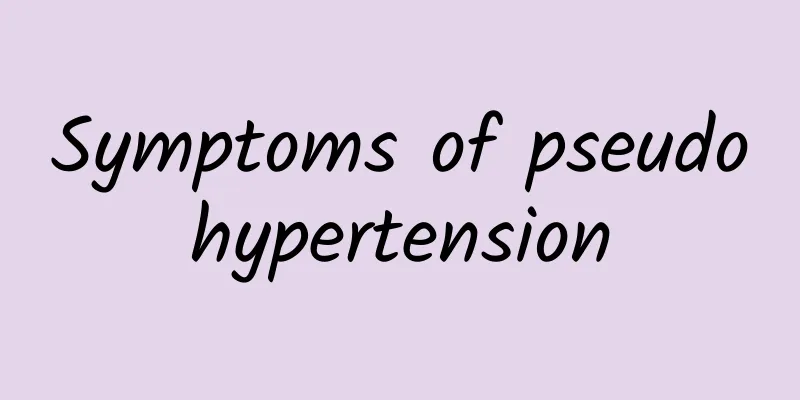Pain in the neck to shoulder

|
The phenomenon of muscle pain from the neck to the shoulder needs to be taken seriously. Currently, the most common disease in the neck is cervical spondylosis. Bad living habits and the special nature of work are the biggest culprits leading to cervical spondylosis. We cannot simply judge cervical spondylosis based on one symptom. We also need to make a comprehensive judgment based on other abnormalities in the body. It is best to figure out the situation as soon as possible to avoid it from persisting. This situation is generally caused by cervical spondylosis, which causes stiffness and discomfort in the neck and shoulder muscles. Cervical spondylosis, also known as cervical spondylosis, is a general term for cervical osteoarthritis, hypertrophic cervical spondylitis, cervical radiculitis, and cervical disc herniation. It is a disease based on degenerative pathological changes. It is mainly caused by long-term strain of the cervical spine, bone hyperplasia, or herniated disc, ligament thickening, which leads to compression of the cervical spinal cord, nerve roots or vertebral arteries, resulting in a series of clinical syndromes of functional disorders. It manifests as vertebral instability and loosening; nucleus pulposus protrusion or extrusion; bone spur formation; ligament hypertrophy and secondary spinal canal stenosis, etc., which stimulate or compress adjacent nerve roots, spinal cord, vertebral arteries, cervical sympathetic nerves and other tissues, causing a series of symptoms and signs. Clinical manifestations The clinical symptoms of cervical spondylosis are relatively complex. The main symptoms include neck and back pain, upper limb weakness, numbness of fingers, lower limb weakness, difficulty walking, dizziness, nausea, vomiting, and even blurred vision, tachycardia and difficulty swallowing. The clinical symptoms of cervical spondylosis are related to the site of the lesion, the degree of tissue involvement and individual differences. 1. Cervical spondylotic radiculopathy (1) It has typical radicular symptoms (numbness, pain), and the range is consistent with the area innervated by the cervical spinal nerves. (2) The head pressure test or brachial plexus traction test is positive. (3) The imaging findings are consistent with the clinical manifestations. (4) Pain point blocking has no significant effect. (5) Diseases other than cervical spine such as thoracic outlet syndrome, carpal tunnel syndrome, cubital tunnel syndrome, frozen shoulder, etc. that mainly cause upper limb pain. 2. Cervical spondylotic myelopathy (1) Clinical manifestations of cervical spinal cord damage. (2) X-rays show bone hyperplasia at the posterior edge of the vertebral body and spinal canal stenosis. Imaging confirmed the presence of spinal cord compression. (3) Excludes amyotrophic lateral sclerosis, spinal cord tumors, spinal cord injury, multiple neuropathy, etc. 3. Vertebral artery type cervical spondylosis (1) The patient has had a history of cataplexy. Accompanied by cervical vertigo. (2) The neck rotation test is positive. (3) X-rays show segmental instability or bone hyperplasia of the axis joint. (4) Often accompanied by sympathetic nervous system symptoms. (5) Exclude vertigo caused by eyes or ears. (6) Except for the insufficiency of the basilar artery caused by compression of the vertebral artery segment I (the segment of the vertebral artery before entering the transverse foramen of C6) and the vertebral artery segment III (the segment of the vertebral artery before leaving the cervical vertebrae and entering the skull). (7) Vertebral arteriography or digital subtraction vertebral arteriography (DSA) is required before surgery. 4. Sympathetic cervical spondylosis The clinical manifestations include a series of sympathetic nervous system symptoms such as dizziness, blurred vision, tinnitus, numbness of hands, tachycardia, precordial pain, etc. X-rays show instability or degeneration of the cervical spine. Vertebral arteriography was negative. 5. Esophageal compression type cervical spondylosis Bird-beak-like hyperplasia in front of the cervical vertebrae compresses the esophagus and causes dysphagia (confirmed by esophageal barium examination), etc. 6. Cervical spondylosis Cervical spondylosis, also known as local cervical spondylosis, refers to pain in the head, shoulders, neck, and arms and corresponding tenderness points. There are no obvious degenerative changes such as intervertebral disc stenosis on X-rays, but there may be changes in the physiological curve of the cervical spine, intervertebral instability, and mild bone hyperplasia. |
<<: How to make a thick neck thinner
>>: What should I do if my neck is itchy due to allergies?
Recommend
Recurring urinary tract infections
Urinary tract infection is a condition that many ...
What to do about neurological tinnitus? Diet therapy and traditional Chinese medicine remedies are effective
Neurological tinnitus is a relatively common ear ...
What are the treatments for cesarean section scars?
I believe that many friends who have had caesarea...
What to do if your child has itchy teeth
It is common for children to have itchy teeth in ...
Symptoms of cough asthma
Cough asthma is a respiratory disease, which is g...
What is the role of pazufloxacin sodium chloride
Have you heard of Pazufloxacin Sodium Chloride? T...
Can coix seed and red bean boiled water be drunk all year round?
Adzuki beans are red beans. We usually say that e...
Can I get pregnant the first time?
Conception itself is a complicated process. Both ...
Is moxibustion therapy good?
Moxibustion on the navel is a way to treat diseas...
Medical records of Ma Huang Fu Zi Xi Xin Tang
Ma Huang Lu Te Ke Xi Xin Tang, the name of a Chin...
How to treat a weak woman
For women, if they are physically weak, they must...
There seems to be something in the throat
It is definitely abnormal to have something in th...
The left side of my neck hurts when I press it
The neck is a very important part of our body and...
Can mulberry leaves remove freckles?
Mulberry tree is a relatively common tree. In add...
Fast-acting herbal remedies
Insomnia is very common in life and has a great i...









